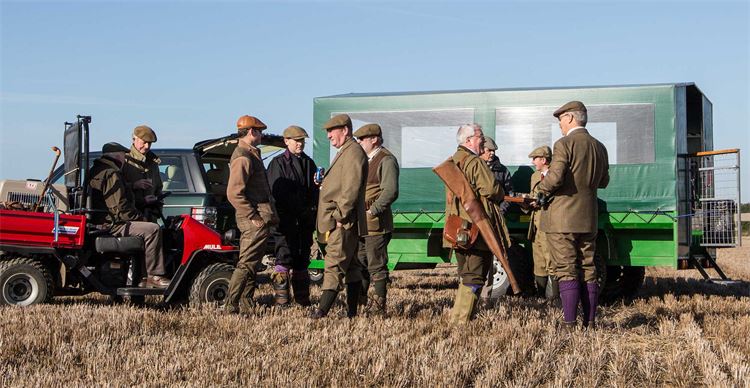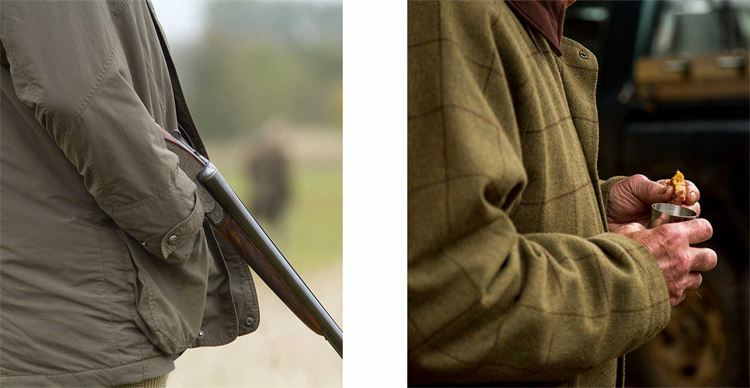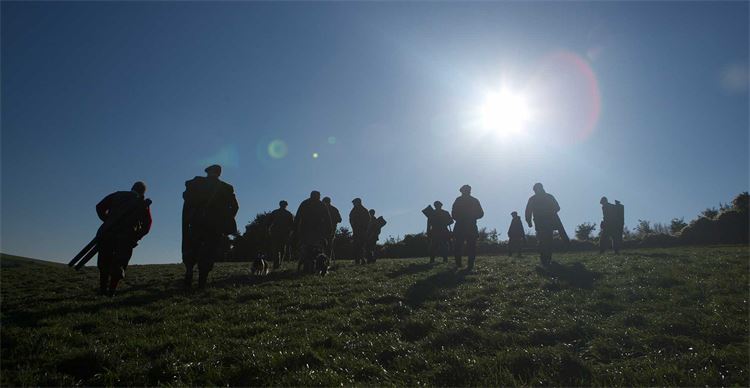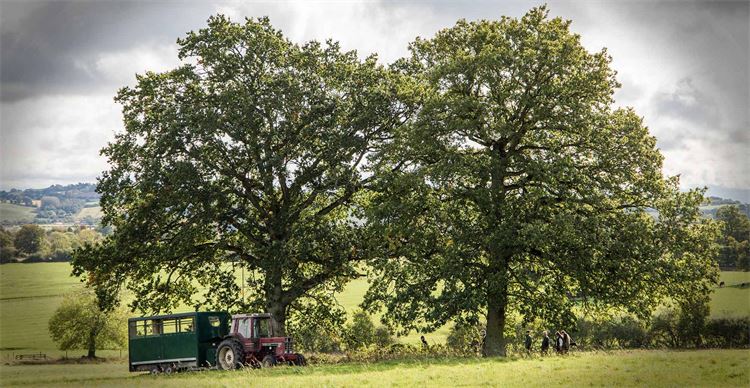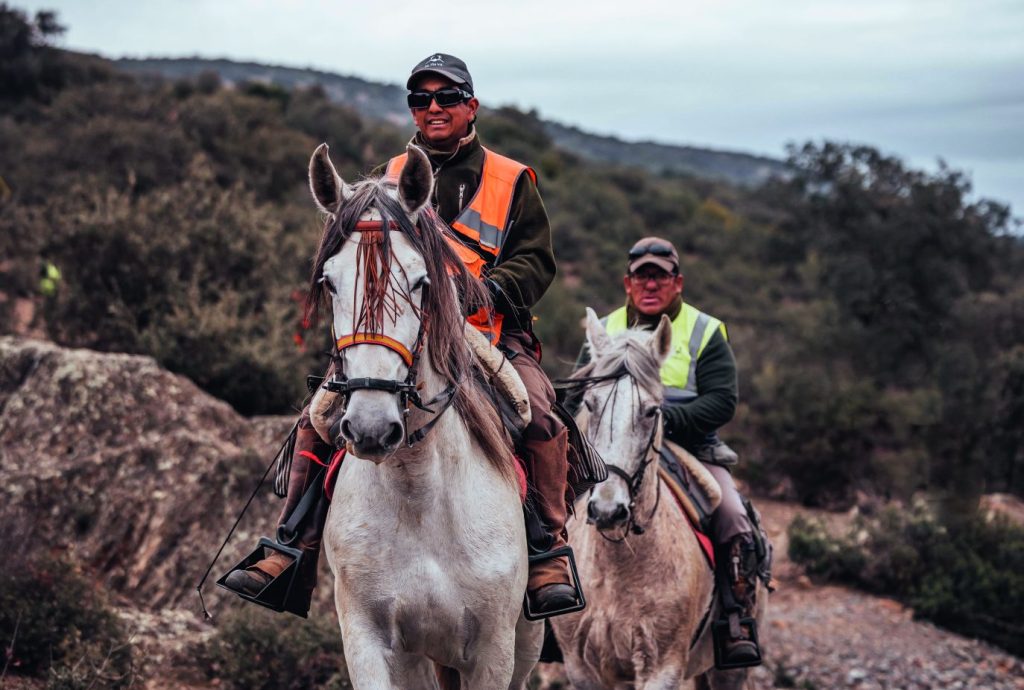The perfect shoot
Tim Furbank identifies the factors that make for a dream day's shooting.
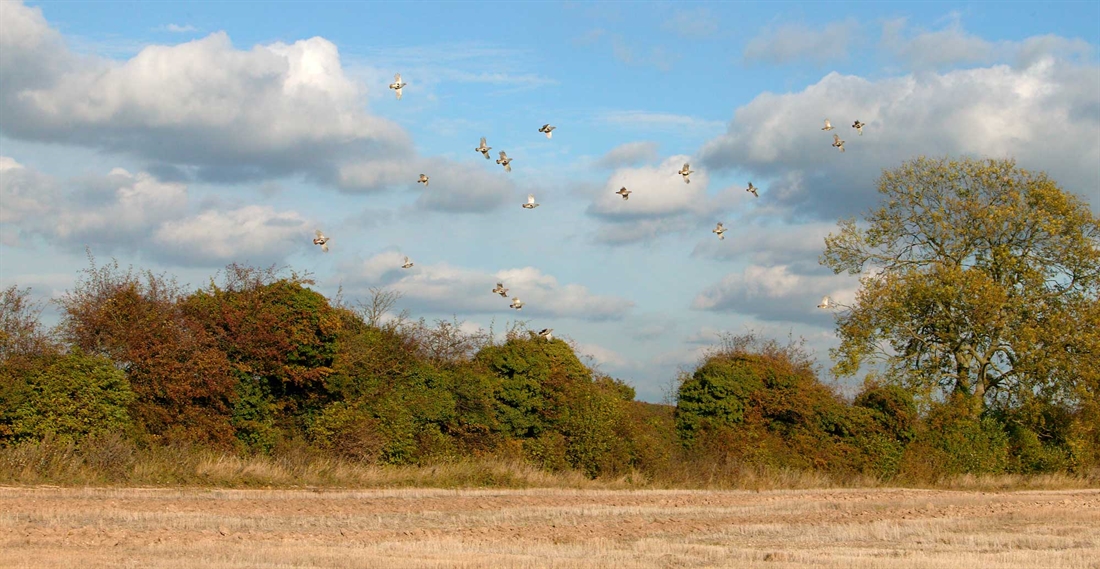
For the last eight years I have been very privileged to sit on the judging panel for the Purdey Awards and I have visited some quite remarkable shoots, from small wildfowling syndicates to renowned high bird shoots, and from fledgling grey partridge projects to gloriously restored grouse moors. I am often asked, ‘given the choice of any, where would you choose to shoot?’ and, of course, it’s impossible to answer!
I have only shot grouse a few times but the wildness and beauty of the moors, the anticipation whilst you wait in the butts and the adrenaline rush when the first grouse are on you is something that never fails to amaze. An invitation to shoot grouse really is something to treasure. However, my personal involvement in habitat creation and management for wild grey partridges means that it is the greys that are the chosen quarry for my perfect shoot day.
Take it as read that I am shooting with a team of best mates, the day is dry and overcast with a stiff south-westerly breeze, and we all shoot brilliantly! These factors are variables that are out-with the control of the shoot, though, so what am I looking for a shoot to provide?
A warm welcome
It doesn’t need to be a ducal hall but it’s nice to meet in a room that is warm and welcoming and says something about the shoot, whether that’s through pictures on the walls or photographic albums and gamebooks. Our host is enthusiastic, welcoming and upbeat about the day ahead and tells us a bit about how the season has gone so far and what we should expect today. Over the past 10 years the shoot has been steadily improving the habitat for wild game and the keepering team has focused on intensive predator control in the spring and early summer. Their pheasant poults arrive in July and they only release cock pheasants and a few hundred redleg partridges to ensure there is enough game to shoot, even in a bad breeding year. Fortunately the weather this year has been perfect for wild game and the grey partridges and wild pheasants have done really well – so well that we are told that, on this late October day, as well as being allowed to shoot the greys and cock pheasants, we will be allowed to shoot one hen each per drive.
Transport
We move off together in a comfortable gunbus, which has windows so we can see the countryside as we go. It is beautiful rolling countryside with hedgerows of varying heights, full of berries, and arable fields surrounded by diverse field margins, from wild bird seed mixes to floristically enhanced grass margins and strips of perennial winter cover including chicory, fennel and teasel.
Fieldcraft
Arriving at the first drive, we are asked to keep quiet as we line out on a stubble field, a gun-shot back from a tall hedge. The wind is blowing from our front right quarter. There are no pegs and the headkeeper lines the Guns out at 40-yard intervals before taking the downwind flank and quietly lining his flanking team out in the sugar beet field behind the hedge. The upwind flank follows suit and then all is quiet.
A flock of linnets lift from the field margin into the hedge and several hares lollop through onto the stubble before seeing the Guns and pinning their ears back. Pigeons jink and flare as they clear the line but no one moves. We can hear the magical sound of the greys calling to each other as they are pushed from stubble fields into the sugar beet in front of us. Suddenly the silence is broken by the shrill blast of a whistle, and a split second later the first covey of greys clears the hedge, sees the Guns and starbursts across the line. The next 15 minutes sees some of the most exciting shooting imaginable as whistles at both ends of the line signal coveys of greys and redlegs interspersed with a few towering pheasants and one or two spectacular pigeons.
Picking-Up
As we sleeve our guns at the end of the drive we look round to see the picking-up team working the field behind us, allowing those of us with dogs to pick up dead birds nearby. The flanking teams join us and lend a hand, reminding us of the birds we missed! The pickers-up then come forward and let us know of any wounded birds that they have picked before a final sweep of the stubble to ensure everything is gathered.
Habitat
At drinks we are told about the farming policy, which is to intensively farm the productive areas of fields for food and to farm the less productive areas for wildlife. A well-planned Countryside Stewardship Scheme delivers a sensible financial return on the poorer quality areas and BTO surveys on the farm show how farmland bird numbers have increased massively since they implemented the focussed predator control in the spring which complements the wildlife habitat. We notice that the farmed landscape is a checkerboard of habitat and our host explains how they moved away from block cropping and utilised the field margins under advice from the GWCT, with the ultimate aim of producing a shootable surplus of grey partridges.
What they are doing is certainly working and the second drive produces another spectacular show of partridges, although the strengthening wind makes it harder for the flanks to keep the birds coming through the line and several coveys are lost out the side.
Hospitality
Elevenses are a real treat, with all of the food harvested from the farm. Venison carpaccio and salmis of partridge washed down with the drink of your choice. Our host explains the importance he places on the use of shot game, and that, whilst the shoot is signed up to the British Game Alliance (BGA) and raises funds for the Country Food Trust (CFT), nearly all the game harvested from the farm is either taken by the Guns and beaters or used to produce tasty meals on shoot days. Any surplus is delivered to a local butcher who produces the most delicious game pies and sausages.
A Challenge
The next two drives are on a different part of the farm and we stand in a steep-sided grass valley – so steep that we have no idea what is above us. Our host explains that this is a more wooded area of the farm and is the main release area for the pheasants and redlegs. There are several copses and strips of maize and miscanthus along the top of the banks on either side of us.
This is the second time that the redlegs have been shot and they start coming before the beaters are near the first cover crop. Whilst some of them try to fly straight across the valley, several curl along the valley top providing some really challenging shooting. It’s the first time through for the pheasants so we are asked to be choosy about what we shoot at, but the wind and the fact they already have a 30-yard height advantage means that every bird that is shot is a memorable one.
The Grand Finale
I’ve always preferred to shoot through and to enjoy a meal and beer or two at the end of the day rather than at lunchtime, so after the fourth drive we have another refreshment stop whilst the beating team blanks in a large area of land to a block of roots in the middle of a stubble field. The headkeeper explains that the block of roots was a fallow plot in the spring and that he had three pairs of lapwing nesting on it. Once the lapwing chicks had fledged he was able to drill a crop of turnips and forage rape into the plot and the farm was happy for him to broadcast some strips of mustard seed into the surrounding stubble field to create a drive.
This time the drive works perfectly with the flanks pushing in just far enough to squeeze nearly all the coveys through the line, letting the wind and the athleticism of the birds do the rest.
The quarry
I remember beating on the farm shoot as a child and the tradition at the end of the day was to lay the bag out for everyone to witness the harvest and to be respectful to the quarry. It’s a tradition I would like to see return. We have had an epic day and have shot enough greys for each of us to take home a leash to savour. The rest of the game is shared out amongst the others involved.
The pub
I do love beer and good pub grub, so after shooting, the entire team of Guns, keepers, beaters and pickers-up retire to a local hostelry to congratulate each other, tell more tall stories and reminisce about a truly extraordinary day.
Related Articles
Get the latest news delivered direct to your door
Subscribe to Fieldsports Journal
Elevate your experience in the field with a subscription to Fieldsports Journal, the premium publication for passionate country sports enthusiasts. This bi-monthly journal delivers unparalleled coverage of game shooting, fishing and big game across the UK and beyond.
Each issue offers a stunning collection of in-depth features, expert opinions and world-class photography, all presented in a timeless yet contemporary design.
Save 10% on shop price when you subscribe, with a choice of packages that work for you. Choose from Print & Digital or Digital only with each journal delivered directly to your door or via the app every other month, plus access to past issues with the digital back issue library.






